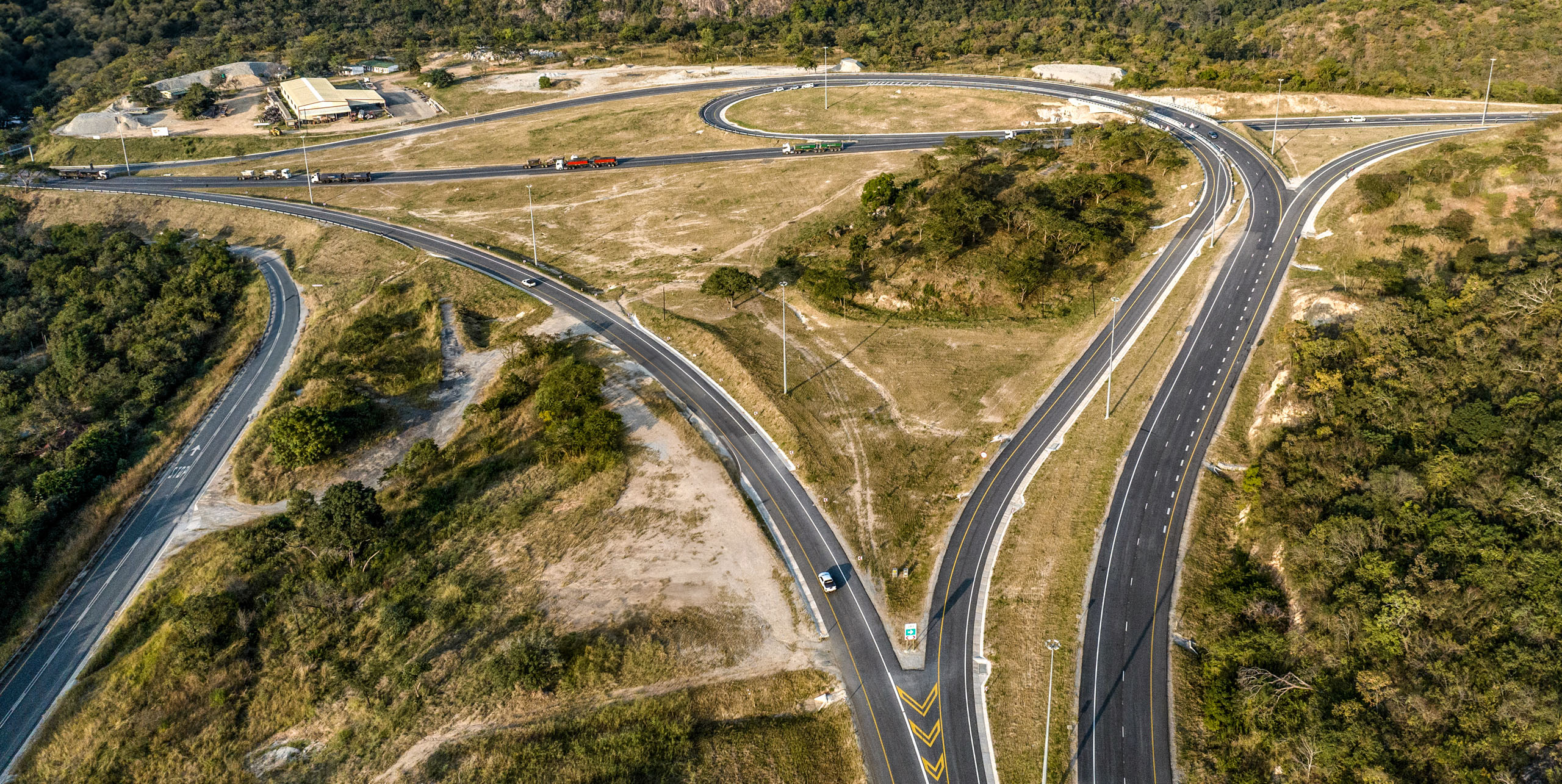
The Montrose Interchange, uniquely situated at the confluence of two steep valleys, presented substantial topographical and infrastructural challenges. The existing Crocodile River Bridge, with its complex geometry, posed a significant design challenge. SMEC addressed these by incorporating two new deck-stiffened arch bridges, realigning the N4-6Y to eliminate a hazardous blind curve, and widening the existing Crocodile River Bridge. The innovative design minimised environmental impact, preserved natural features, and enhanced road safety through improved visibility and traffic flow. The arch bridges were designed to leverage the natural strength of the hard rock cuttings, eliminating the need for conventional support structures and integrating seamlessly with the surrounding landscape.
The aesthetic considerations were paramount, with the design team intentionally seeking structural options that complemented the natural environment. The arch bridges feature visually slender elements that enhance their transparency, maintaining the natural beauty of the site. The arches have a very flat span-to-rise ratio, creating a shallow, elegant form that blends seamlessly with the landscape. Aesthetic lighting was incorporated into the bridge structure to highlight the architectural elements and improve night-time visibility and safety.
Impact
The Montrose Interchange Upgrade had a positive social impact, creating over 350 jobs for local laborers and engaging more than 20 local subcontractors. The project supported the development of small and medium enterprises (SMMEs) and provided extensive training opportunities, contributing to the economic upliftment of the Mbombela communities.
“SANRAL’s partnership with TRAC, and provincial and local government, delivered a new, state-of-the-art road infrastructure which meets the best engineering and construction standards in the world. This project shows us that South Africa has the capability to build freeway interchanges that can compare to any similar projects in countries with advanced and highly developed economies.” Minister Sindisiwe Chikunga at the Opening of Montrose Interchange
Throughout the project, SMEC maintained rigorous project management, ensuring adherence to budget and timelines despite the complex and challenging nature of the work. Their efforts culminated in the successful completion of the interchange in September 2023, which has since facilitated seamless traffic flow, enhanced safety, and boosted economic activity in the region.
Project stats
- Realignment and upgrade of 600m of the existing N4-6y to facilitate the new ramp positions.
- 1800m of new directional ramps to facilitate free-flow movements in all directions.
- Widening of the existing 160m-long Crocodile River bridge from two lanes to five.
- Two new deck-stiffened arch bridges, anchored into the natural rock, spanning across the N4.
- 11 new energy-efficient high-mast lights to illuminate the interchange at night.
- 100% reduction in stopped delay for vehicles.

















